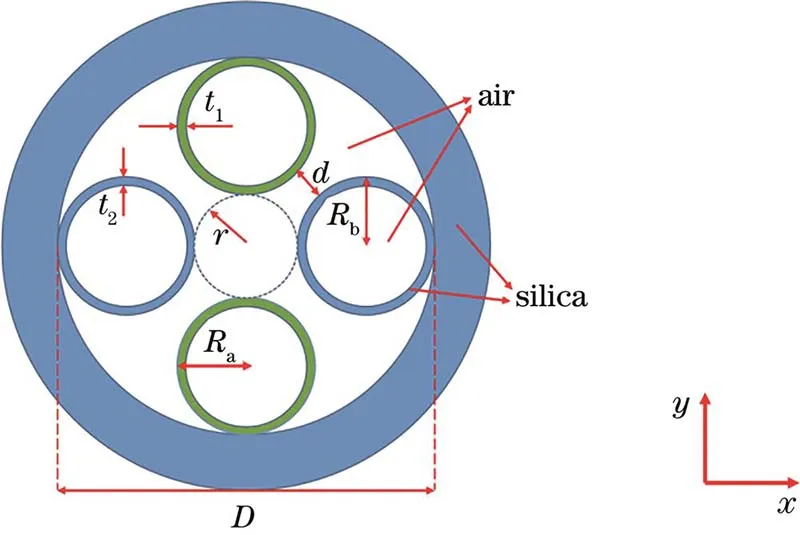In recent years, with the explosive growth in data transmission demands, optical fiber communication technology has continued to achieve new breakthroughs. From traditional solid-core optical fibers to the new generation of hollow-core fiber technology, this innovation not only advances optical communication but also opens significant opportunities in other fields. As a frontier exploration in the field of optical fiber communication, hollow-core fiber technology is regarded as a potential cornerstone for future communication technologies due to its low loss, high transmission speed, and wide bandwidth characteristics. This article provides an in-depth discussion on the principles, technical advantages, application areas, and future development trends of hollow-core fiber technology.
1. Principles of Hollow-Core Fiber Technology
Traditional optical fibers use solid materials (such as glass or plastic) as their core and rely on the principle of total internal reflection to confine light within the core. However, these solid materials inherently introduce absorption and scattering, resulting in signal loss and distortion. Hollow-core fiber technology breaks away from this traditional approach by using a hollow core design, where light predominantly propagates through air or low-density gases, significantly reducing interaction between light signals and the material.
The light transmission in hollow-core fibers relies on specialized microstructural designs. Common types of hollow-core fibers include:
Photonic Bandgap Fibers: These guide light through photonic bandgap effects created by periodic microstructures surrounding the core.
Anti-Resonant Fibers: These use anti-resonance effects in the cladding to minimize light leakage.
Both designs effectively reduce optical loss while enhancing the fiber’s ability to suppress nonlinear effects.
2. Technical Advantages of Hollow-Core Fiber Technology
Ultra-Low Nonlinear Effects
Since light predominantly travels through air, hollow-core fibers significantly reduce nonlinear effects caused by fiber material, such as Raman scattering and Brillouin scattering. This makes them ideal for high-power laser transmission and ultrashort pulse optics.
Low Transmission Loss
Material absorption and scattering losses are nearly negligible in hollow-core fibers. Particularly in specific wavelength ranges (e.g., ultraviolet or far-infrared), transmission losses are much lower than those in traditional fibers. Recent studies have shown that the loss in some hollow-core fibers approaches the theoretical limit of vacuum transmission.
High Transmission Speed and Low Latency
The speed of light in air is close to that in a vacuum and faster than in solid glass materials used in traditional fibers. As a result, hollow-core fibers significantly reduce signal transmission latency, making them particularly suitable for applications requiring extremely low latency, such as high-frequency trading and next-generation communication networks.
Wideband Characteristics
Hollow-core fibers offer a broader transmission bandwidth, supporting higher communication rates, which are critical for 5G, 6G, and ultra-wideband communication networks.
3. Applications of Hollow-Core Fiber Technology
Hollow-core fiber technology is not only significant for optical fiber communication but also shows great potential in many other industries:
High-Speed Optical Communication
Hollow-core fibers are ideal for ultra-high-speed, ultra-low-latency communication systems, suitable for next-generation data center interconnects and international backbone communication networks.
High-Power Laser Transmission
In medical and industrial laser processing, hollow-core fibers can efficiently transmit high-power lasers due to their low loss and nonlinear suppression capabilities.
High-Sensitivity Optical Sensing
Hollow-core fibers are well-suited for high-sensitivity applications such as gas sensing, pressure sensing, and biomedical detection, particularly in fields requiring high precision and low interference.
Precision Optical Experiments
Hollow-core fibers reduce material interference in optical experiments and are widely used in cutting-edge research areas like quantum optics and ultrafast optics.
4. Future Development Trends of Hollow-Core Fiber Technology
Despite the immense potential of hollow-core fiber technology, its large-scale commercialization still faces challenges. First, the manufacturing process for hollow-core fibers is complex, particularly the high-precision design and production of microstructures, resulting in high production costs. Second, the optical coupling efficiency between hollow-core fibers and traditional fibers needs further optimization. Additionally, the stability of hollow-core fibers in practical applications requires improvements through structural design and material selection.
In the future, with advancements in micro-nano manufacturing technology and increasing market demand, hollow-core fibers are expected to achieve breakthroughs in the following areas:
Improved Manufacturing Techniques: Optimizing large-scale production processes to reduce costs and improve product consistency.
Expanded Application Fields: Hollow-core fibers will find more applications in emerging fields such as smart manufacturing, defense communication, and space communication.
Enhanced Compatibility with Traditional Fiber Systems: Improving integration with existing optical fiber communication infrastructure to facilitate large-scale deployment.
As a disruptive innovation in optical fiber communication, hollow-core fiber technology fundamentally improves light transmission performance and provides a technological foundation for next-generation communication and optical applications. As the technology matures, hollow-core fibers will help build more efficient, reliable, and intelligent communication networks, propelling global information development to new heights.



